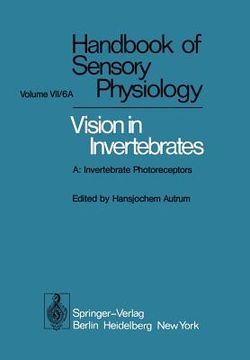Share
comparative physiology and evolution of vision in invertebrates: a: invertebrate photoreceptors (in English)
H. Autrum
(Author)
·
M. F. Bennet
(Author)
·
B. Diehn
(Author)
·
Springer
· Paperback
comparative physiology and evolution of vision in invertebrates: a: invertebrate photoreceptors (in English) - Autrum, H. ; Bennet, M. F. ; Diehn, B.
$ 161.04
$ 169.99
You save: $ 8.95
Choose the list to add your product or create one New List
✓ Product added successfully to the Wishlist.
Go to My WishlistsIt will be shipped from our warehouse between
Monday, June 24 and
Tuesday, June 25.
You will receive it anywhere in United States between 1 and 3 business days after shipment.
Synopsis "comparative physiology and evolution of vision in invertebrates: a: invertebrate photoreceptors (in English)"
In the comparative physiology of photoreception by the Protista and the invertebrates two aspects are emphasized: (1) the diversity of visual processes in these groups and (2) their bearing upon general mechanisms of photoreception. Invertebrates have evolved a far greater variety of adaptations than vertebrates- modifications aiding survival in the remarkably different biotopes they occupy. The number of species in itself suggests this multiformity; each of them has peculiarities of its own, in morphology as well as in physiology and behavior. But these special adaptations are variations on a few great themes. Although the catalogue of invertebrate species is immense, the literature concerning them nearly rivals it in extent-even if one considers only that fraction dealing with visual physiology. Taxonomy proceeds by grouping the species, categorizing them in genera, families, orders, and progressively larger units. Similarly, comparative physiology aims at an analogous, more or less compre- hensive, classification. This Part A of Volume VII/6, like Part B that follows it, emphasizes the broad questions that concern groups larger than the individual species; in some cases these questions have general applicability. The middle course between approaches that are too specialized and those that are too general is often elusive, but here we attempt to follow it. The vast number of special adaptations-probably, as we have said, as large as the number of species-is beyond the range even of a handbook.
- 0% (0)
- 0% (0)
- 0% (0)
- 0% (0)
- 0% (0)
All books in our catalog are Original.
The book is written in English.
The binding of this edition is Paperback.
✓ Producto agregado correctamente al carro, Ir a Pagar.

